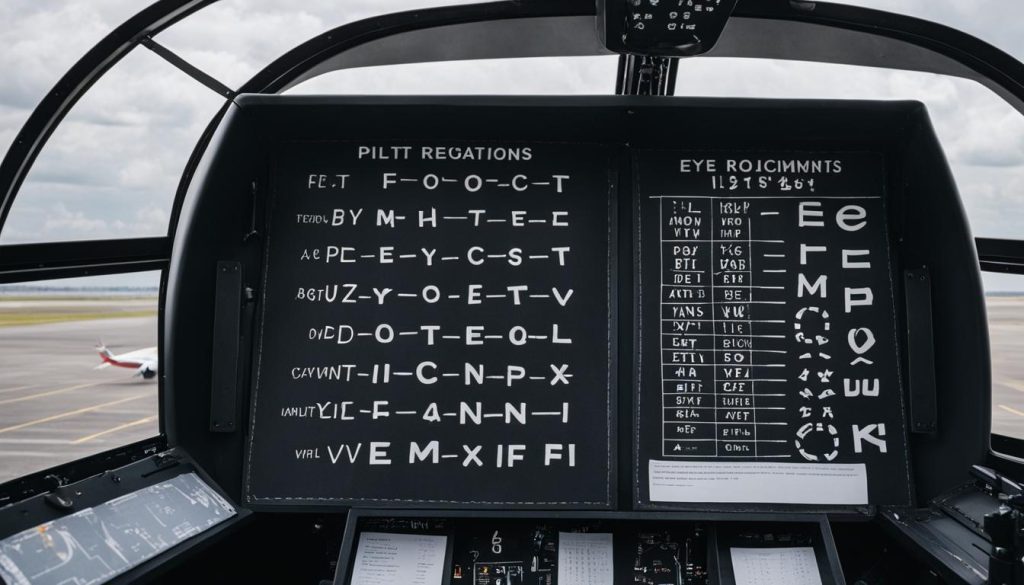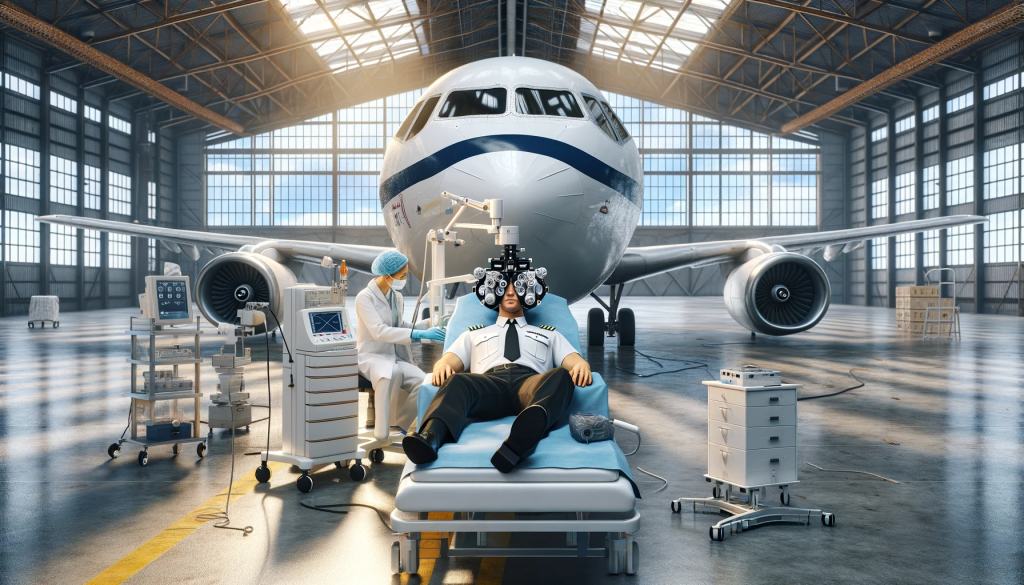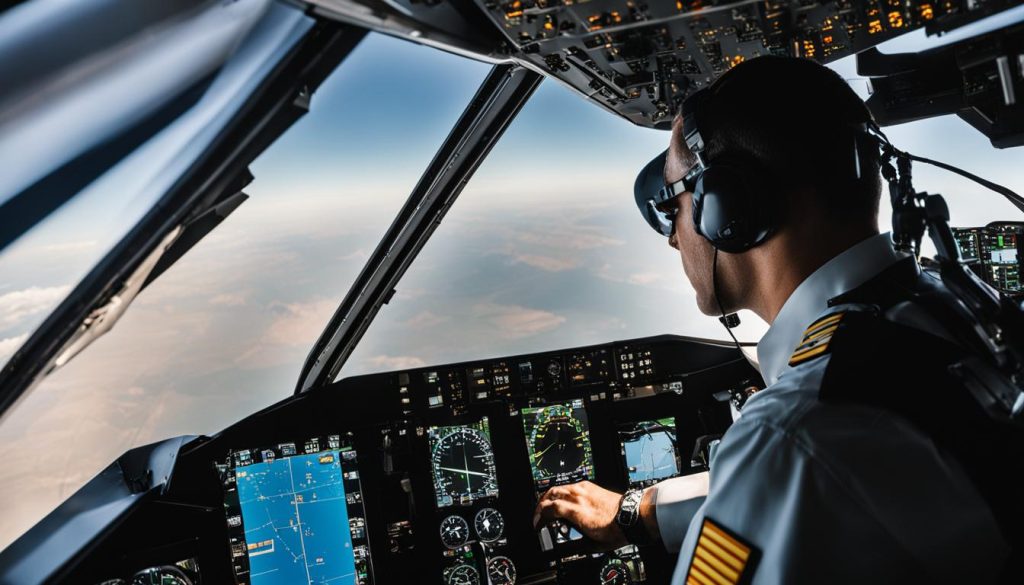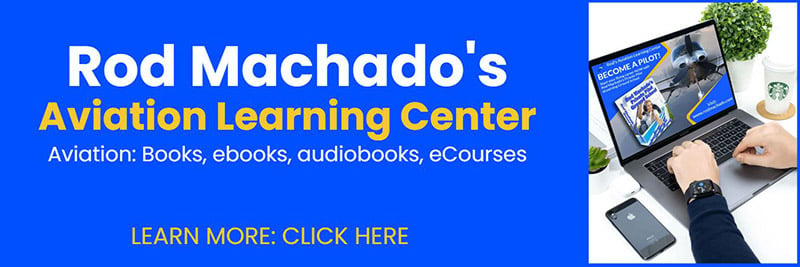Original publication date: December 24, 2023
Last Updated: 1 year
Author: Max Skyler
Topic: Flight Physiology, Vision
Number of Comments: 0
Subscribe to “Flight Following”, the official newsletter of PilotDiscovery.com.

Shop PilotsHQ for aviation gear, accessories, and more!

Sign up for PilotInsitute’s Private Pilot Online Ground School!
As someone who has always dreamed of flying, I was disheartened when my optometrist diagnosed me with astigmatism during a routine eye exam. At that moment, I thought my dreams of becoming a pilot may have been shattered. After doing some research however, and speaking with professionals in the industry, I quickly learned that having astigmatism does not mean that the doors have closed on the pursuit of my lifelong dream.
Being diagnosed with astigmatism does not automatically disqualify you from exercising the privileges of a pilot license. Working with your Aviation Medical Examiner (AME), you may be cleared to fly if you can demonstrate 20/40 vision or better through any approved corrective measure.
In response, I have created this comprehensive resource guide, in which we will:
- take a closer look at the impact of astigmatism on individuals aspiring to become pilots.
- discuss how pilots with astigmatism navigate their aviation journey, both in terms of general aviation as well as as commercially.
- explore the vision requirements set by the Federal Aviation Administration (FAA).
- examine the various options available for correcting astigmatism, including eyeglasses, contact lenses, and refractive surgery.
Ultimately, the ability to pursue a pilot license with astigmatism will depend on various factors, including the severity of the condition, the type of flying you plan to do, and the assessment criteria set by the FAA.
What You Need To Know:
- Astigmatism doesn’t automatically disqualify you from becoming a pilot.
- A determined mindset and proactive management of the condition can help aspiring pilots, as well as existing pilots, succeed in their aviation journey.
- Astigmatism is a common eye condition that affects the way light is processed by the retina.
- Pilots must meet specific vision requirements set forth by the FAA in order to be cleared to fly.
- Options for correcting astigmatism include eyeglasses, contact lenses, and refractive surgery.
Understanding Astigmatism: What Is It Exactly?
As a person who has astigmatism, I know firsthand how challenging it can be to explain this eye condition to others. Simply put, astigmatism is a common refractive error that affects the way light enters the eye, causing blurry or distorted vision.
More specifically, astigmatism occurs when the cornea or lens is not completely round, but rather has a more oblong shape. This causes light to focus on two points on the retina, rather than a single point, resulting in blurred or distorted vision.
Aside from blurry vision, other common symptoms of astigmatism include eye strain, headaches, and difficulty seeing at night.
Common Symptoms of Astigmatism
So, how do you know if you have astigmatism? A comprehensive eye exam with your optometrist or ophthalmologist can diagnose astigmatism, as well as determine the degree and type of astigmatism you have.
According to Mayo Clinic, common symptoms of astigmatism include:
- Blurred or distorted vision, both up close and at a distance
- Eyestrain
- Headaches
- Squinting
- Difficulty seeing at night
It’s important to note that astigmatism can occur alongside other refractive errors, such as nearsightedness or farsightedness.
Simply put, astigmatism is a refractive error that occurs when the cornea (the clear outer layer of the eye) or the lens inside the eye has an irregular and asymmetrical shape. This causes light to focus unevenly on the retina, resulting in blurry or distorted vision.
The severity of astigmatism can vary from person to person, and some individuals may not even realize they have the condition. However, if left uncorrected, astigmatism can impact your daily activities, including your ability to drive, read, use a computer… and of course, pilot an aircraft!
Types of Astigmatism
There are two main types of astigmatism: regular and irregular.
Regular Astigmatism
Regular astigmatism occurs when the cornea has an oblong shape.
Irregular Astigmatism
Irregular astigmatism can be caused by eye injuries, surgeries, or other conditions like keratoconus.
How Do You Measure Astigmatism?
The degree of astigmatism is measured in diopters.
A diopter is a unit used to calculate the focusing strength of a pair of glasses or contact lenses. This measurement helps your eye doctor determine the right treatment for your astigmatism.
| Severity of Astigmatism | Diopters |
| Mild | 0.5 to 1.0 diopter |
| Moderate | 1.0 to 2.0 diopters |
| Severe | 2.0 diopters or more |
Vision Requirements Based On Class of Pilot Certification
The FAA has published a concise synopsis of the medical standards that serve as the basis for the minimum vision requirements for vision. It further expounds upon what exactly you can and you cannot do as a pilot, depending on the type of flying you wish to perform, and the associated circumstances therein.
Levels of Vision
There are 4 different levels of vision, as far as the FAA is concerned:
- distant vision
- near vision
- intermediate vision
- color vision
FAA’s Medical Certification Process
Before obtaining a certification, pilots have to go through a medical examination process with an FAA-designated aerospace medical examiner (AME). During this process, the examiner will evaluate your overall health and assess your vision, including possible astigmatism.
The FAA recognizes various vision correction methods, such as contact lenses, glasses, and refractive surgery, as long as they meet the FAA’s visual acuity standards. Pilots also need to pass regular vision exams to maintain their certification.
The FAA issues 4 different classes of medical certification to pilots:
| Medical Certificate | Pilot License | Type of Aviation Operations | Federal Aviation Regulations (FAR) |
| 1st Class | Airline Transport Pilot | Passenger & cargo airlines | Part 67.103 |
| 2nd Class | Commercial Pilot License | Any commercial operation other than major airline or cargo services | Part 67.203 |
| 3rd Class | Private Pilot License | General aviation (non-commercial) flights | Part 67.303 |
| Basic Med | Private Pilot License | General aviation – with limitations | Part 68.5 |
For more details, please check out this previous post published on our site:
FAA Vision Requirements Cheat Sheet
Generally speaking, to meet the visual acuity requirements:
- you must have 20/20 or better vision for commercial aviation, with or without corrective lenses.
- you must have 20/40 or better vision for general aviation operations, with or without corrective lenses.
Visual Acuity Testing
The Federal Aviation Administration (FAA) has well-defined vision requirements for pilots to ensure that they can adequately perceive their surroundings, navigate, and anticipate any potential safety risks. If you have astigmatism, you may require corrective lenses to achieve the required visual acuity standards. Contact lenses or eyeglasses can help enhance your visual acuity and may be required to satisfy these requirements.
The visual acuity test measures how clearly you can see letters on an eye chart from a distance of 20 feet. If you use corrective lenses such as eyeglasses or contact lenses, the lenses shouldn’t exceed a certain prescription limit.
The test assesses your ability to see colors, shades, and contrast and detects any issues with your eye muscles, binocular vision, and peripheral vision. Medical conditions that can affect your vision, such as astigmatism, may disqualify you from obtaining a pilot certification in some cases.

The FAA has published a detailed Guide For Aviation Medical Examiners on what type of vision tests to perform and how to perform them, on pilots. Furthermore, it also expounds on the assessment criteria, which the pilot must meet, in order to be successfully issued a medical certificate.
Tangential Issues Indirectly Impacted By Visual Acuity
It’s important to note that visual acuity is not the only factor aviation authorities consider. They also evaluate your ability to maintain situational awareness, judge distances, and withstand gravitational forces during flying. However, meeting the visual acuity requirements is a crucial step to becoming a pilot.
Flying with Astigmatism: Corrective Lenses
As a pilot, having clear vision is essential to safely operate an aircraft. When it comes to astigmatism, there are several corrective measures available to ensure that pilots can meet the necessary vision standards. Let’s take a look at some of the options:
Glasses
Glasses are a go-to choice for pilots with astigmatism. They can be designed to correct astigmatism and other vision problems at the same time. One disadvantage of glasses is that they can easily fall off or become uncomfortable during longer flights, especially if you are wearing bulky headphones. It’s important for pilots to select glasses that fit securely and comfortably.
Contact Lenses
Astigmatism-correcting contact lenses are another common vision corrective measure for pilots with astigmatism. They provide a wider field of view compared to glasses and eliminate the potential discomfort caused by wearing glasses for extended periods. However, they can be more challenging to maintain and have a higher risk of complications such as dry eyes.
Standard contact lenses are spherical in shape.
Toric lenses, are a special type of contact lens, which are specifically shaped to correct astigmatism.
Your optometrist will most likely prescribe you toric lenses, if you are diagnosed with astigmatism.
When choosing between eyeglasses and contact lenses, pilots should consider the type of flying they do, their individual needs and preferences, and any potential comfort or vision issues. Some pilots may prefer wearing glasses for ease of use, while others may opt for contact lenses that provide a wider field of vision and better peripheral awareness.

Pilots Should Always Keep Spare Lenses In Their Flight Bag
It is important to note that pilots with contact lenses should always have backup eyeglasses available in their flight bag.
You never know when a contact lens could:
- become dislodged
- shifted off of your iris
- start irritating you
- becoming dry, leading to blurred vision
This should also be true for pilots with glasses. Although rare, you never know when you might lose your current pair of glasses in flight. A screw could come loose, a lens could pop-out. It pays to have a spare set of glasses in your flight bag!
Refractive Surgery for Pilots with Astigmatism

In some cases, pilots with astigmatism may choose to undergo LASIK or other surgical procedures to correct their vision. While these procedures can provide significant benefits, there are also some potential risks to consider, such as dry eyes and halos. It’s important to thoroughly do your due diligence and research, and consult with a qualified medical professional to determine if this the right option for you, before deciding on surgery.
If you have astigmatism and are considering pursuing a career as a pilot, refractive surgery may be an option worth exploring. Refractive surgery is a type of eye surgery that corrects vision problems, such as nearsightedness, farsightedness, and astigmatism, by reshaping the cornea.
The table below summarizes the different types of refractive surgery available:
| Type of Surgery | Description | Pros | Cons |
| LASIK | Uses a laser to create a thin flap in the cornea and reshape the underlying tissue to correct vision | Fast recovery time, little to no pain, high success rate, permanent correction | Possible side effects, such as dry eyes, glare, halos, and undercorrection or overcorrection |
| PRK | Uses a laser to remove the thin outer layer of the cornea and reshape the underlying tissue to correct vision | No flap created, no risk of flap complications, permanent correction | Longer recovery time, discomfort during healing, possible side effects similar to LASIK |
| SMILE | Uses a laser to create a small incision in the cornea and remove a piece of tissue to reshape the cornea and correct vision | Less invasive than LASIK and PRK, faster healing time, fewer side effects | Not as widely available, potential for undercorrection or overcorrection |
Before considering refractive surgery, it is important to weigh the potential benefits and drawbacks, as well as discuss the procedure with your ophthalmologist and your aviation medical examiner. The FAA has specific guidelines and restrictions for pilots who have undergone refractive surgery, so it is important to be well-informed before making a decision.
The FAA has published an information pamphlet, to serve as general guidance for pilots, to help them determine whether you qualify for LASIK, and whether LASIK is right for you.
Remember: Refractive surgery is a personal decision that should be made after careful consideration and consultation with medical professionals. It is not a requirement for pursuing a career as a pilot, but it may provide a viable option for those with astigmatism who want to achieve optimal visual acuity.
Frequency of Eye Exams
Regardless of the chosen method, it’s important for pilots with astigmatism to undergo regular eye exams to ensure their vision correction is up to par for safe flying.
By law, the FAA requires all pilots to renew their medical certificate at set intervals, depending on the class of the certificate, and the age of the pilot.
This involves undergoing a comprehensive medical exam, administered by an AME.
The medical exam must include a vision test.
Part of Refer to the table below for the timelines.
| Class of Medical Certificate | Authorized Flight Privileges | Validity Period |
| 1st Class | Airline Transport Pilot | 6 months if over age 40; 12 months if under age 40 |
| 2nd Class | Commercial Pilot | 12 months |
| 3rd Class | Private Pilot / General Aviation | 24 months if over age 40; 60 months if under age 40 |
| BasicMed | Private Pilot / General Aviation (with some restrictions) | 24 months for online medical course; 48 months for medical exam |
Bear in mind what while the above table depicts the minimum legal requirements, it would behoove you, as a pilot diagnosed with astigmatism, to consider seeing an optometrist more frequently, as needed, in order to keep up with and address any potential changes in your vision.
Visual Conditions That Can Aggravate Astigmatism
As a pilot, one of my top priorities is ensuring the safety of myself and my passengers. Astigmatism can pose unique challenges to pilots, but with proper management, flying with this condition can be absolutely safe.
While we delved into the various corrective measures for astigmatism in the sections above, it is important to note that the aim is not only to be able to achieve 20/40 or 20/20 vision, but to also be able to address any situations that could pose a challenge to and further aggravate your astigmatism.
Whether you are flying during the day or you are flying at night, you may find it necessary to make adjustments to the lighting within the cockpit, to reduce eye strain.
During the daytime, that may involve using the windshield visor or the wearing of sunglasses, to reduce glare due to excessive ambient brightness glare that can cause eye strain.
At night, this may involve reducing the brightness and intensity of cockpit lighting, which is crucial for being able to adequately and accurately scan the instrument panel.
This also can tangentially impact your peripheral vision as well.
Astigmatism and Flying Career Prospects: Can It Limit Opportunities?

Let’s face it: being a pilot is a dream job for many. However, if you have astigmatism, you may wonder if your career prospects in the aviation industry are limited.
While astigmatism can present some challenges, it doesn’t necessarily mean the end of your flying aspirations. As long as you can demonstrate that you are able to achieve 20/40 or better vision, during an aviation medical exam, to your AME, you should be cleared to obtain your medical certificate. It doesn’t matter whether this is achieved through your natural eyesight, through corrective lenses, or through LASIK.
Being Proactive About Your Astigmatism As A Pilot
As someone with astigmatism, I know how challenging it can be to pursue aviation. But that didn’t stop me from pursuing dreams.
| Strategy | Explanation |
|---|---|
| Vision Correction | Work with an optometrist to find the best vision correction method for your individual needs, whether that be glasses, contacts, or corrective surgery. |
| Proactive Management | Stay on top of your eye health with regular check-ups and by taking steps to reduce eye strain, such as using cockpit-specific lighting and adjusting display settings. |
| Mindset | Adopt a growth mindset and embrace the fact that overcoming challenges is part of the journey. Stay motivated by connecting with other pilots who have similar challenges. |
| Resources | Tap into available resources, such as FAA-approved vision exemption programs, to ensure you have the support you need to succeed as a pilot with astigmatism. |
Whether you’re just starting your pilot training or you’ve been flying for years, these strategies can help you overcome the challenges of astigmatism and achieve your career goals.
The Pilot’s Perspective: Advice for Aspiring Pilots with Astigmatism
The Right Vision Correction Method is Key
Finding the right vision correction method is crucial for success in the aviation industry. It’s important to find what works best for you and your eyes.
Proactive Management is Essential
I cannot stress enough the importance of proactive management when it comes to astigmatism. Regular eye exams and staying on top of my vision correction regimen has been key. As a pilot, it’s important to prioritize your eye health and take proactive steps to manage your condition.
“Don’t let astigmatism hold you back from pursuing your dreams as a pilot. With the right mindset, hard work, and determination, anything is possible.
Nurture a Positive Mindset
Finally I cannot emphasize enough the importance of a positive mindset in overcoming any challenges related to astigmatism. You have to believe in yourself and your ability to succeed as a pilot. Don’t let any obstacles, including astigmatism, dim your shine or the limits of your ambition.
Summary
By finding the right vision correction method, maintaining proactive management, advocating for accommodations when necessary, and nurturing a positive mindset, aspiring pilots with astigmatism can achieve their dreams of soaring through the skies!
Tips for Pilots with Astigmatism
If you have astigmatism and are pursuing a career in aviation, there are several tips that can help you maintain optimal vision and overcome potential challenges. Some of these include:
- Invest in high-quality eyeglasses or contact lenses: It’s important to choose eyewear that is specifically designed for individuals with astigmatism, as this can significantly improve visual acuity.
- Get regular eye exams: Keeping up with regular eye exams can help you catch any changes in your vision early on, allowing you to take proactive measures to protect your eyesight.
- Stay hydrated: Drinking plenty of water throughout the day can help prevent dry eyes, which can be a common issue for individuals with astigmatism.
- Take breaks: If you’re spending long periods in the cockpit, plan your trip such that you are able to take breaks to rest your eyes and prevent eye strain, in between legs of a long flight, or in between flights.
- Consider refractive surgery: Refractive surgery can be an effective way to correct astigmatism permanently, but it’s important to discuss the potential risks and benefits with your eye doctor before making a final decision.
By following these tips and working closely with your eye doctor, you can ensure that your astigmatism doesn’t hold you back from pursuing your dream of becoming a pilot.
Seeking Clarity Regarding Astigmatism
As a pilot with astigmatism, you may face certain challenges when it comes to meeting the vision requirements set by aviation authorities. While astigmatism can impact your ability to achieve the required level of visual acuity, there are several options available for correcting your vision and pursuing your aviation career.
From eyeglasses and contact lenses to refractive surgery, there are a variety of methods for addressing astigmatism and improving your visual sharpness. While the aviation medical certification process may require additional evaluations and accommodations, many pilots with astigmatism have successfully obtained their certification and continue to enjoy fulfilling careers in aviation.
Personal experiences from other pilots with astigmatism can provide valuable insights into managing your condition and navigating your aviation career. By following practical tips for maintaining optimal vision and seeking guidance from aviation authorities when needed, you can pursue your passion for flying and overcome any obstacles you may encounter.
Remember, astigmatism does not have to disqualify you from piloting an aircraft. With the right mindset and resources, you can achieve your goals and soar to new heights in your aviation career.
FAQ
Does having astigmatism disqualify you from piloting an aircraft?
No, having astigmatism does not automatically disqualify individuals from piloting an aircraft. While there are certain considerations and requirements in place, pilots with astigmatism can still pursue and succeed in their flying careers.
What is astigmatism exactly?
Astigmatism is a common eye condition that affects vision. It occurs when the cornea or lens of the eye is irregularly shaped, causing blurry or distorted vision.
What does the FAA say about astigmatism and pilot requirements?
The Federal Aviation Administration (FAA) has guidelines and restrictions for individuals with astigmatism who wish to become pilots. It is important to consult the FAA’s regulations and undergo the necessary medical evaluations to determine eligibility.
Is it safe to fly with astigmatism?
Safety is a top priority in aviation. Pilots with astigmatism can ensure safe flying by meeting the necessary vision standards. There are also technologies and tools available to help mitigate the effects of astigmatism in the cockpit.
What are the vision corrective measures available for pilots with astigmatism?
Pilots with astigmatism have various vision correction options, including glasses and contact lenses. Each method has its pros and cons, and pilots should consider their specific needs and requirements when making a choice.
Can astigmatism limit flying career prospects?
Astigmatism can impact career prospects for pilots, as there may be specific regulations and medical evaluations that individuals with astigmatism need to undergo. These requirements can influence the types of flying roles they can pursue.
Are there any success stories of pilots overcoming astigmatism challenges?
Yes, there are inspiring stories of pilots who have triumphed over their astigmatism challenges and achieved successful careers in aviation. They have employed strategies, developed a determined mindset, and utilized resources to fulfill their dreams.
What are practical tips for pilots to manage astigmatism in the cockpit?
Pilots with astigmatism can effectively manage their condition in the cockpit by ensuring proper lighting, having regular eye exams, and implementing other strategies to maintain visual acuity.
What does the future hold in terms of astigmatism research and innovations?
Ongoing research and innovations are continuously being conducted to enhance the vision and flying capabilities of individuals with astigmatism. It is important to stay updated on the latest advancements in the field.
What advice do pilots with astigmatism have for aspiring pilots?
Pilots with astigmatism offer valuable advice and insights for aspiring pilots who also have the condition. They share tips and words of wisdom, encouraging aspiring pilots to pursue their dreams and overcome any obstacles.
FAQ
Does astigmatism disqualify you from piloting an aircraft?
No, having astigmatism does not automatically disqualify you from becoming a pilot. However, there are specific vision requirements that pilots must meet, and astigmatism can potentially impact visual acuity, which may need to be corrected for aviation purposes.
What is astigmatism?
Astigmatism is a common vision condition characterized by an irregular curvature of the cornea or lens of the eye. This irregularity causes blurred or distorted vision, as light entering the eye is not properly focused on the retina.
What are the vision requirements for pilots?
The vision requirements for pilots vary depending on the aviation authority and the type of pilot’s license being pursued. Generally, pilots must have good uncorrected visual acuity, as well as the ability to see colors, perceive depth, and have adequate peripheral vision.
How does astigmatism affect visual acuity?
Astigmatism can affect visual acuity by causing blurry or distorted vision, especially at certain distances or angles. Pilots with astigmatism may experience difficulty reading instruments or recognizing objects in their peripheral vision.
How can astigmatism be corrected?
Astigmatism can be corrected using eyeglasses or contact lenses specifically designed to compensate for the irregular corneal shape. These corrective lenses help to enhance visual acuity and provide clear, sharp vision for pilots with astigmatism.
Can pilots with astigmatism undergo refractive surgery?
Refractive surgery, such as LASIK or PRK, may be an option for pilots with astigmatism. However, it is important for pilots to consult with their aviation medical examiner and comply with the specific guidelines and waiting periods set by the aviation authority in their jurisdiction.
What are the FAA guidelines and restrictions regarding astigmatism?
The Federal Aviation Administration (FAA) provides guidelines and restrictions for pilots with astigmatism. These guidelines typically include a specified maximum level of astigmatism that is deemed acceptable for aviation purposes.
How does astigmatism impact aviation medical certification?
Astigmatism is evaluated during the aviation medical certification process, which assesses a pilot’s overall medical fitness. If the astigmatism is within the acceptable limits set by the aviation authority, it should not pose a significant obstacle to obtaining or maintaining a medical certificate.
Are there any personal experiences from pilots with astigmatism?
Yes, many pilots with astigmatism successfully navigate their aviation careers. Some pilots have shared their experiences of managing astigmatism, including the use of corrective lenses and adhering to recommended vision care practices.
What are some tips for pilots with astigmatism?
Pilots with astigmatism can follow these tips: – Regularly visit an eye care professional for comprehensive eye exams – Wear appropriate corrective lenses while flying – Follow recommended eye hygiene practices, such as keeping contact lenses clean – Be aware of potential glare and take steps to mitigate its effects, such as using anti-glare coatings on glasses





